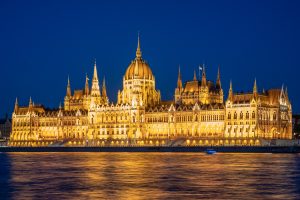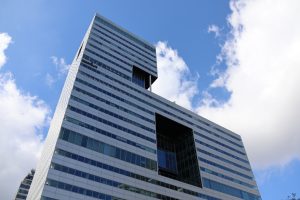UNDERSTANDING THE TERM NOISE
The use of loudspeaker on various occasions in India has been a long drawn issue. With growing sensitivity of population towards various pollution, had started dragging the matter before court. The use of loudspeaker causes noise which is derived from from the Latin term “nausea“. It has been defined as “unwanted sound, a potential hazard to health and communication dumped into the environment with regard to the adverse effect it may have on unwilling ears.” Noise is defined as an unwanted sound. Sound which pleases the listeners is music and that which causes pain and annoyance is noise. At times, what is music for some can be noise for others. Section 2(a) of the Air (Prevention and Control of Pollution) Act, 1981, includes noise in the definition of ’air pollutant’. Section 2(a) states that “air pollutant” means any solid, liquid or gaseous substance including noise present in the atmosphere in such concentration as may be or tend to be injurious to human beings or other living creatures or plants or property or environment. According to Encyclopaedia Britannica: “In acoustics noise is defined as any undesired sound.” According to Chambers 20th Century Dictionary , noise means Sound especially of loud, harsh or confused kind; a sound of any kind; an over loud or disturbing sound; frequent or public talk. In Chambers 21st Century Dictionary, the definition of noise has undergone a change. Noise pollution stands carved out as a phrase separately from noise. The two are defined as under :Noise is more than just a nuisance. It constitutes a real and present danger to people’s health. Day and night, at home, at work, and at play, noise can produce serious physical and psychological stress. None is immune to this stress. Though we seem to adjust to noise by ignoring it, the ear, in fact, never closes and the body still responds-sometimes with extreme tension, as to a strange sound in the night.“Noise a sound; a harsh disagreeable sound, or such sound; a pollution, an excessive or annoying degree of noise in a particular area, e.g. from traffic or aeroplane engines.”
RULINGS OF VARIOUS HIGH COURTS
The High Court of Karnataka had directed the State government to issue directions to the police and the Karnataka State Pollution Control Board (KSPCB) to initiate action on use of amplifiers and loudspeakers in religious places in the State in violation of laws on noise pollution and the directions issued by the apex court. A Division Bench, comprising Chief Justice Abhay Shreeniwas Oka and Justice Sachin Shankar Magadum, issued the directions while hearing a PIL petition, filed by one Girish Bharadwaj, a resident of Bengaluru. The State must ensure protection of the rights of the citizens under Article 21 of the Constitution, the Bench observed, while taking note of the fact that the court had came across several PIL petitions about illegal use of loudspeakers in religious places in violations of the Noise Pollution (Regulation and Control ), Rules, 2000, issued under the Environment Protection Act, 1986.SUPREME COURT ON LOUDSPEAKERS
Noise Pollution (V), In re, (2005) 5 SCC 733 at page 782:
1. The noise level at the boundary of the public place, where loudspeaker or public address system or any other noise source is being used shall not exceed 10 dB(A) above the ambient noise standards for the area or 75 dB(A) whichever is lower.
2. No one shall beat a drum or tom-tom or blow a trumpet or beat or sound any instrument or use any sound amplifier at night (between 10.00 p.m. and 6 a.m.) except in public emergencies.
3. The peripheral noise level of privately-owned sound system shall not exceed by more than 5 dB(A) than the ambient air-quality standard specified for the area in which it is used, at the boundary of the private place.
CPCB, THE REGULATOR AND VARIOUS DECIBEL LEVEL
The CPCB has laid down the permissible noise levels in India for different areas. Noise pollution rules have defined the acceptable level of noise in different zones for both daytime and night time. In industrial areas, the permissible limit is 75 dB for daytime and 70 dB at night. In commercial areas, it is 65 dB and 55 dB, while in residential areas it is 55 dB and 45 dB during daytime and night respectively. Earlier, noise pollution and its sources were addressed under the Air (Prevention and Control of Pollution) Act, 1981. They are now, however, regulated separately under the Noise Pollution (Regulation and Control) Rules, 2000. Additionally, noise standards for motor vehicles, air-conditioners, refrigerators, diesel generators and certain types of construction equipment are prescribed under the Environment (Protection) Rules, 1986.Similarly, violating noise pollution norms over the use of diesel generator sets can result in sealing of the sets and a fine between Rs 10,000 and Rs 100,000 depending on the size of the set.
Violations in cases of sound-emitting construction equipment can result in a fine of Rs 50,000 and its seizure or sealing.













Add Comment